Google’s Long, Strange Life-Span Trip
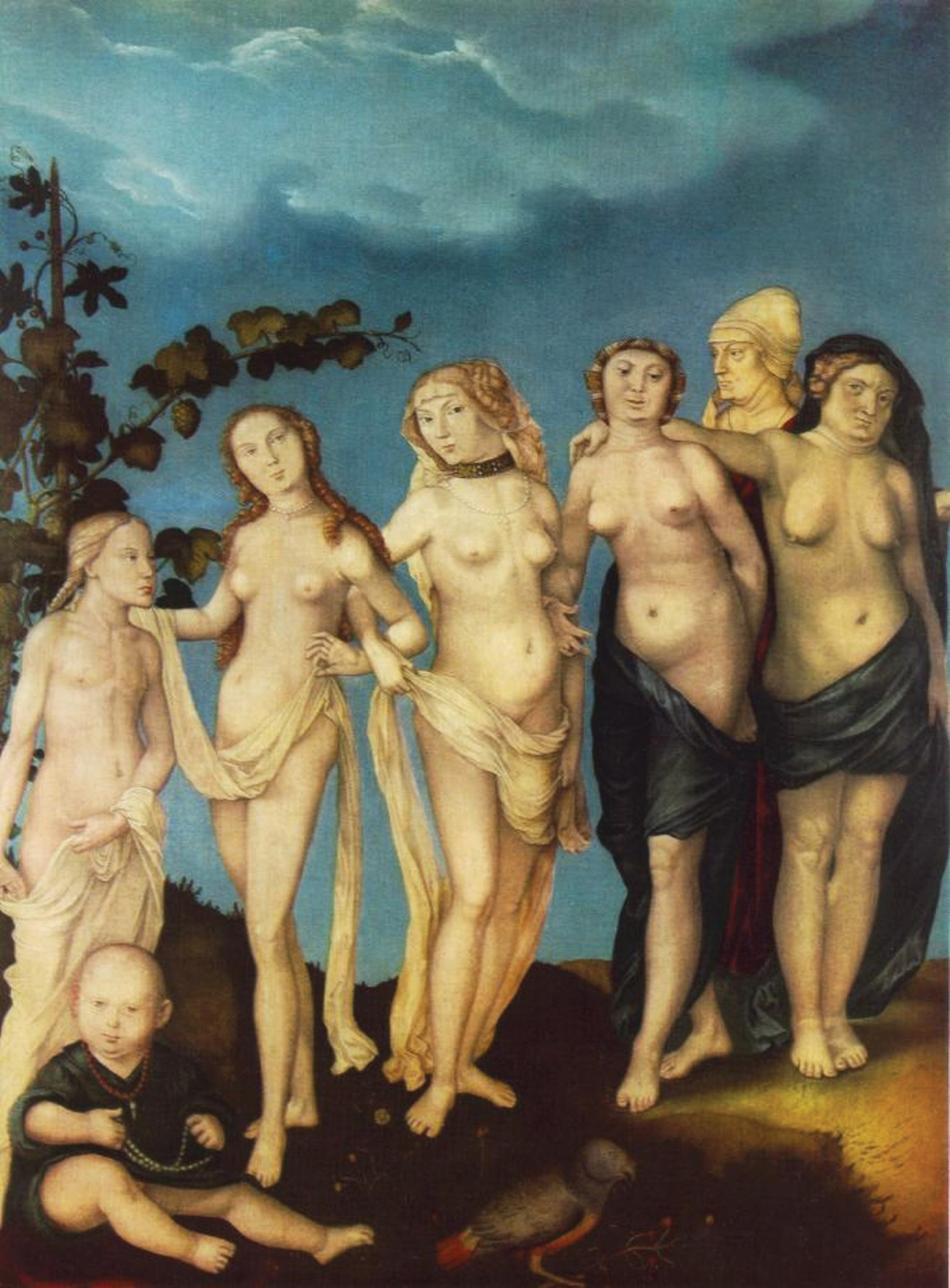
At a laboratory outside San Francisco, money from the founders of Google maintains a large number of naked mole rats. The hairless rodents require exacting, expensive conditions to thrive: they live in coöperative colonies like ants, led by a queen rat. But what is truly extraordinary is that they can live about 30 years—10 times longer than a mouse.
The rodents belong to Calico Labs, short for the California Life Company. In 2013, the cofounder of Google, Larry Page, announced that his company would form Calico and fund it lavishly to carry out a long-term project, trying to sort out the causes of aging and do something about them. The company’s mission: to build a Bell Labs of aging research. It hoped to extend the human life span by coming up with a breakthrough as important, and as useful to humanity, as the transistor has been.
There are reasons to think aging can be slowed in fundamental ways. Among Calico’s first hires was Cynthia Kenyon, now its vice president of aging research, who 20 years ago showed that altering a single DNA letter in a laboratory roundworm made it live six weeks instead of three. There is something hair-raising about Kenyon’s videos of old, should-be-dead worms wriggling vigorously across a petri dish.
So Google’s founders created an academic-biotech hybrid they call an R&D company to follow up on such clues, providing nearly unlimited funding to a group of top researchers. Calico has hired stars like artificial-intelligence specialist Daphne Koller. With equal contributions from Google’s parent company, Alphabet, and the drug company AbbVie, it has $1.5 billion in the bank. But despite the hype around its launch—Time magazine asked, “Can Google Solve Death?”—Calico has remained a riddle, a super-secretive company that three years in hasn’t published anything of note, rebuffs journalists, and asks visiting scientists to sign nondisclosure agreements.
About the art
Aging is the inexorable journey from birth to old age and death. Today, some researchers think the aging process could be slowed. The artworks that accompany this story depict the phases of life and the dream of eternal youth.
In fact, Calico has other researchers “a little miffed,” says Felipe Sierra, director of the division of aging biology at the National Institute on Aging. “We want to know what they are doing so we can focus on other things, or collaborate. They are a research company, so what are they researching?”
MIT Technology Review has learned that Calico is, in effect, an elite university research group housed within a corporate bunker, doing mostly basic science. It has more than 100 employees and has assembled a Noah’s ark of yeast, worms, and more exotic creatures like the naked mole rats, which are kept at the Buck Institute for Research on Aging, about 30 miles from Calico’s South San Francisco headquarters.
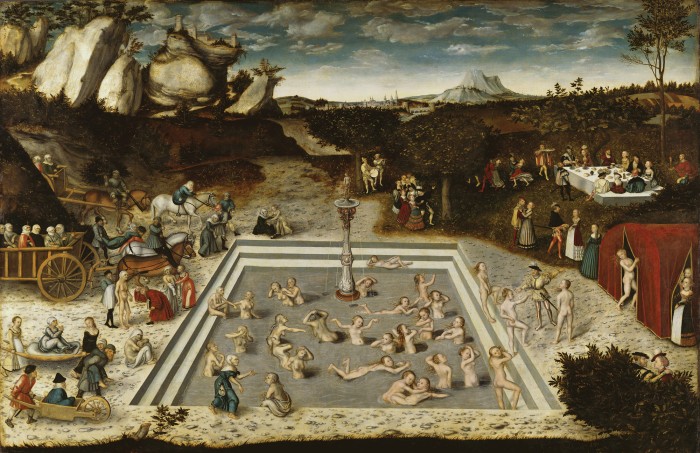
Lucas Cranach the Elder
1546
What’s different about a mole rat? That is the sort of costly, open-ended question Calico can afford to ask. And then there’s the seven-year study Calico is financing that will follow 1,000 mice from birth to death to search for biomarkers of aging. Right now, there’s no proven test for a person’s “biological” age; finding one would be scientifically useful and possibly lucrative. “They don’t open the kimono much,” says Brian Kennedy, a Buck Institute scientist who interacts with Calico. “I think they believe we need a broader grasp on the biology of aging. They recognize it can’t possibly be simple.”
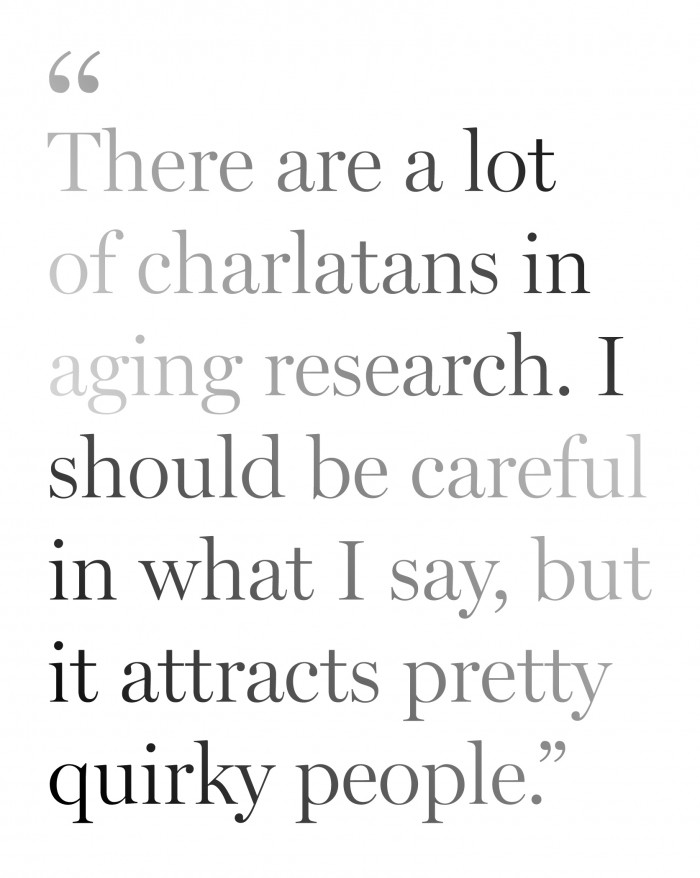
The Google founders aren’t the first billionaires to decide that aging is the “most fundamental unsolved problem in biology,” as Calico’s press releases put it. Larry Ellison, the cofounder of Oracle, gave away $335 million to scientists studying aging before redirecting his foundation’s grants toward eliminating polio in 2013. The investor Peter Thiel has also donated to the anti-aging cause, and there’s even a $500,000 Palo Alto Longevity Prize to anyone who can radically extend the life of a mammal.
The difficulty is that scientists don’t know enough about why animals age. Calico’s Hal Barron, hired from Roche to lead its drug development efforts, told the National Academy of Medicine in 2015 that there would be no short-term payoff. “We believe you have to take a very long view,” he said, “and not rush into the clinic until you really know what you are doing.”
A hundred and seventy five years ago most people died from infections, not from old age. Thanks to vaccines, better nutrition, and all-around improvements in public health and medicine, life expectancy at birth in wealthy nations has doubled from 40 to around 80 years, an average gain of 2.5 years per decade. But now that we live longer, we have traded up to a new set of killers that are harder to beat: cancer, heart disease, stroke, and dementia.
For all these diseases, aging is the single biggest risk factor. An 80-year-old is 40 times as likely to die from cancer as someone middle-aged. The risk for Alzheimer’s rises by 600 times. But what if it were possible to postpone all these deaths by treating aging itself? “I think we have failed in our effort to attack chronic disease when we attack them one by one,” Sierra says. “And the reason is that they have one major risk factor, which is the biology of aging.”
Overarching theory
David Botstein is Calico’s chief scientific officer. He is 74, with a grizzled shadow of beard reaching up from his collar. In November, I found him at a lecture hall at MIT, where he offered a rare window onto experiments under way at Calico. Botstein, a well-known Princeton geneticist whom Calico recruited out of near retirement, was in town to celebrate the birthday of a successful former student, now a sexagenarian. “The pleasure is coming to see old friends,” he says. “The not-so-pleasure is if these guys are 60, what am I?”
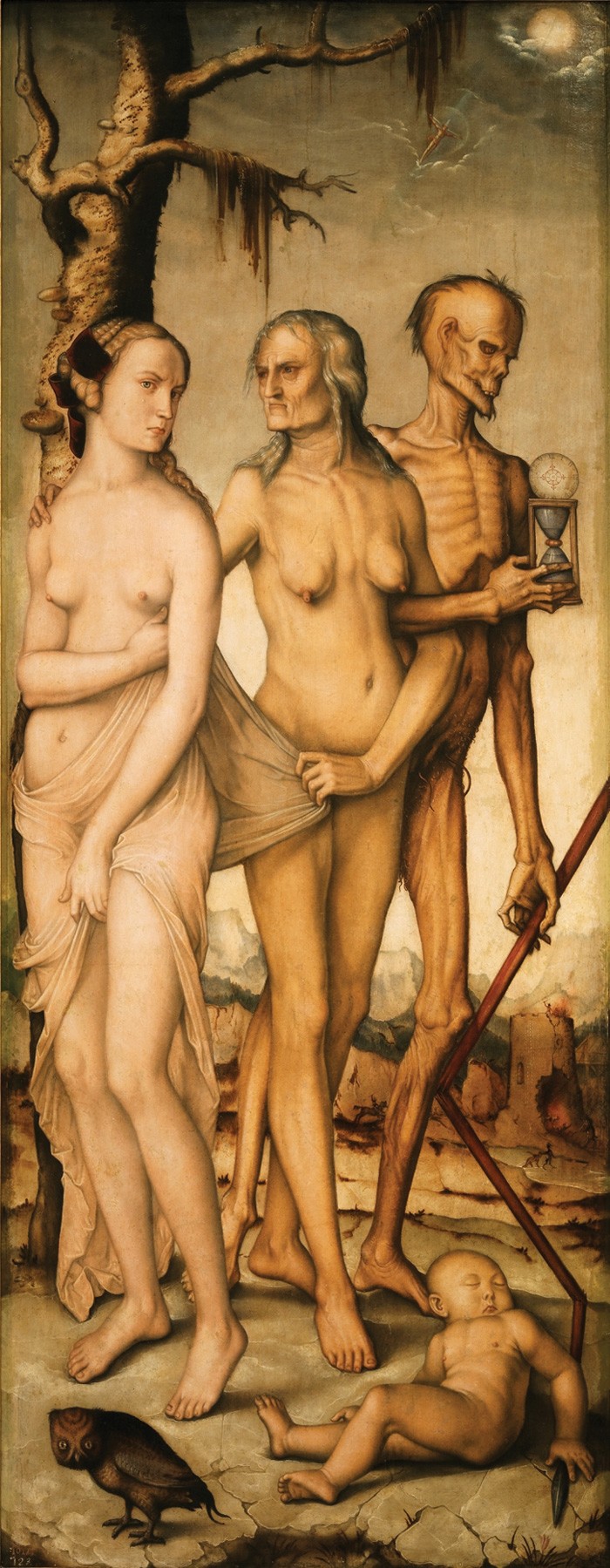
Hans Baldung Grien
1541-1544
In his lecture, Botstein described several technologies—four, in fact—that Calico has for isolating old yeast cells from the daughter cells that bud off them. (One project has the institutional-sounding name Mother Enrichment Program.) These old cells are tracked and subjected to a comprehensive analysis of which genes are turned up or turned down, a technique that is Botstein’s specialty.
Botstein told me Calico is exactly what Google intended: a Bell Labs working on fundamental questions, with the best people, the best technology, and the most money. “Instead of ideas chasing the money, they have given us a very handsome sum of money and want us to do something about the fact that we know so little about aging,” says Botstein. “It’s a hard problem; it’s an unmet need; it is exactly what Larry Page thinks it is. It’s something to which no one is really in a position to pay enough attention, until maybe us.”
Botstein says no one is going to live forever—that would be perpetuum mobile, or perpetual motion, which defies the laws of thermodynamics. But he says Kenyon’s experiments on worms are a “perfectly good” example of the life span’s malleability. So is the fact that rats fed near-starvation diets can live as much as 45 percent longer. The studies Botstein described in yeast cells concerned a fundamental trade-off that cells make. In good times, with lots of food, they grow fast. Under stresses like heat, starvation, or aging, they hunker down to survive, grow slowly, and often live longer than normal. “Shields down or shields up,” as Botstein puts it.
Such trade-offs are handled through biochemical pathways that respond to nutrients; one is called TOR, and another involves insulin. These pathways have already been well explored by other scientists, but Calico is revisiting them using the newest technology. “A lot of our effort is in trying to verify or falsify some of the theories,” Botstein says, adding that he thinks much of the science on aging so far is best consumed “with a dose of sodium chloride.” Some molecules touted as youth elixirs that can act through such pathways—like resveratrol, a compound in red wine—never lived up to their early hype.
According to Botstein, aging research is still seeking a truly big insight. Imagine, he says, doctors fighting infections without knowing what a virus is. Or think back to cancer research in the 1960s. There were plenty of theories then. But it was the discovery of oncogenes—specific genes able to turn cells cancerous—that provided scientists with their first real understanding of what causes tumors. “What we are looking for, I think above everything else, is to be able to contribute to a transformation like that,” he says. “We’d like to find ways for people to have a longer and healthier life. But by how much, and how—well, I don’t know.”
Botstein says a “best case” scenario is that Calico will have something profound to offer the world in 10 years. That time line explains why the company declines media interviews. “There will be nothing to say for a very long time, except for some incremental scientific things. That is the problem.”
To get there, Calico is ratcheting up its expertise and skills. Botstein says it has demonstrated it could decode a human genome from scratch, without peeking at the official genome map. That’s a difficult task requiring significant investment in computing and know-how. But Calico got the right answer, so it’s confident of accurately mapping the genome of the naked mole rat—a job he says is half done. And a precise understanding of how the mole rat’s genes are organized may hold clues to its long life. “A lot of what we do is technology development,” says Botstein. “It’s not interesting, and it’s not supposed to be interesting. It’s how you put one foot in front of the other so you don’t trip on yourself.”
Big disappointment
To some, Calico’s heavy bet on basic biology is a wrong turn. The company is “my biggest disappointment right now,” says Aubrey de Grey, an influential proponent of attempts to intervene in the aging process and chief science officer of the SENS Research Foundation, a charity an hour’s drive from Calico that promotes rejuvenation technology. It is being driven, he complains, “by the assumption that we still do not understand aging well enough to have a chance to develop therapies.”

Hans Baldung Grien
1541-1544
Indeed, some competitors are far more aggressive in pursuing interventions than Calico is. “They are very committed to these fundamental mechanisms, and bless them for doing that. But we are committed to putting drugs into the clinic and we might do it first,” says Nathaniel David, president and cofounder of Unity Biotechnology. This year, Jeff Bezos joined investors who put $127 million behind Unity, a startup in San Francisco that’s developing drugs to zap older, “senescent” cells that have stopped dividing.
These cells are suspected of releasing cocktails of unhelpful old-age signals, and by killing them, Unity’s drugs could act to rejuvenate tissues. The company plans to start with a modestly ambitious test in arthritic knees. De Grey’s SENS Foundation, for its part, has funded Oisin Biotechnologies, a startup aiming to rid bodies of senescent cells using gene therapy.
Other scientists say it is time to begin large human studies of “geroprotectors”—drugs that could decelerate aging altogether. One such effort is being spearheaded by gerontologists at Albert Einstein College of Medicine, in New York. The medication they hope to test, metformin, is used to treat diabetes. It cropped up as an anti-aging prospect after scientists reviewing medical records found that people taking it not only were much less likely to die than other diabetics but died at a 15 percent lower rate than all other patients.
Metformin lowers blood sugar levels, one clue it may have something in common with a low-calorie diet. But getting a study off the ground hasn’t been easy. To convince the U.S. Food and Drug Administration to approve the trial, doctors decided to measure metformin’s effectiveness in preventing three separate diseases: heart attack, dementia, and cancer. “They do not recognize aging as a disease, so what we have done is choose diseases of aging with minimal overlap in their causes,” says Steven Austad, a biologist at the University of Alabama at Birmingham and scientific director of the American Federation for Aging Research, which has endorsed the metformin study. “If it simultaneously delays them, that would indicate a slowed rate of aging.”
The trial is designed to involve 6,000 people and would last six years. It would be the first large study of a geroprotector in volunteers, according to S. Jay Olshansky, a public health researcher at the University of Illinois at Chicago. He therefore rates the trial as significant no matter whether it flops or, as he hopes, sets off “the most groundbreaking events in public health in this century.”
The only problem is who will pay for the trial, expected to cost $65 million. The chance the NIH will pay for the entire study is “remote,” says Austad, and since metformin is an old drug not covered by patents, drug companies aren’t interested either. Instead, Olshansky and Austad are going with what’s become a favorite play in research on aging: they plan to hit up billionaires for the money. Funding a groundbreaking advance, Olshansky promises potential investors, could be their “ticket to immortality.”
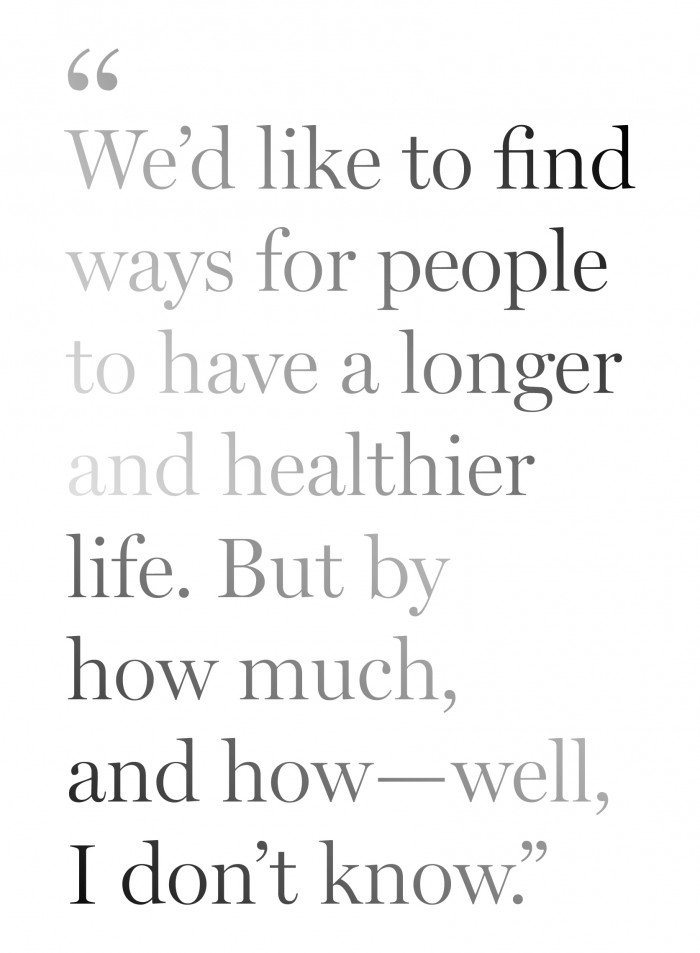
Playing the long game
The science of aging is easy to disregard, given its long historical connection to alchemy, quacks, and vitamin pushers. Even now, many scientists do their utmost to avoid the phrase “anti-aging research”—sounding as it does like a promise made on a tin of skin cream. “There are a lot of charlatans in aging research. I should be careful in what I say, but it attracts pretty quirky people,” says Gary Churchill, a mouse geneticist at the Jackson Laboratory, in Bar Harbor, Maine.
It can’t help, either, that the people who bankroll this science keep saying they hope to live forever. Bill Maris, the former head of Google Ventures who hatched the idea for Calico, has said he thinks it is possible people could live “for 500 years.” That’s pretty unlikely. In that sense, Calico’s creation of a strictly controlled research fortress staffed by recognized leaders makes sense as an inoculum against hokum, maybe even from the people paying the bills. “They are playing the long game,” Churchill says. “It’s a good strategy. It could leave them positioned a decade from now to have something.”
Churchill’s work with Calico gives some idea of how long it could take. In April 2016, the company agreed to pay for a large experiment at Jackson Labs to search for a “biomarker” of aging—a molecule, which they hope to find in the blood, whose quantity or properties change with “biological” age, not just with the hands on the clock. Such a diagnostic could be extraordinarily useful, and profitable.
But searching for such a marker is not cheap. At Jackson Labs, Churchill’s team plans to follow 1,000 mice, drawing blood and placing them inside special cages where food and water intake can be precisely measured and the rodents’ droppings and urine collected. Half the mice will be on a calorie-restricted diet to extend their lives—necessary to confirm whether a biomarker really tags them as biologically younger. The experiment will generate millions of readings—for levels of growth hormones and glucose, among other things. Churchill wouldn’t say how much Calico is paying, but simply feeding that many mice could cost $3 million. “We’ve mapped it out, planned it. It’s immense, and we’d never be able to do this with the NIH,” he says. “The willingness to invest in the long term is the most appealing thing about Calico.”
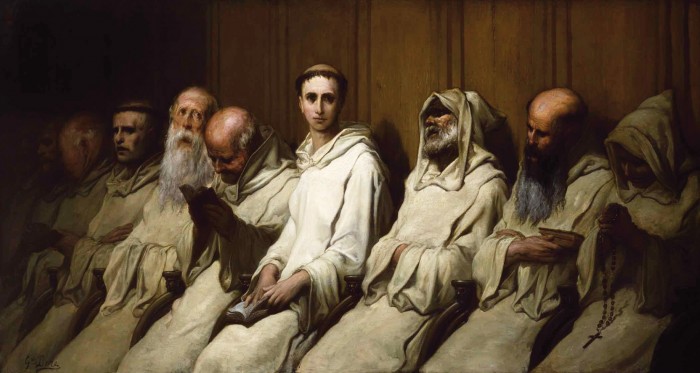
Gustave Doré
circa 1880-1883
Churchill says the ideal biomarker of aging would actually estimate how much longer you have left to live, barring any unforeseen events. And the readout would change if you took a drug or adopted a diet that somehow rescheduled your appointment with the Grim Reaper. With a test like that, companies could see whether their drugs actually influenced aging without waiting many, many years for the answer. Finding such a blood marker would be the kind of breakthrough that aging research so desperately needs—and that Calico was created to discover.
Antonio Regalado is MIT Technology Review’s senior editor covering biomedicine.
Deep Dive
Biotechnology and health
How scientists traced a mysterious covid case back to six toilets
When wastewater surveillance turns into a hunt for a single infected individual, the ethics get tricky.
An AI-driven “factory of drugs” claims to have hit a big milestone
Insilico is part of a wave of companies betting on AI as the "next amazing revolution" in biology
The quest to legitimize longevity medicine
Longevity clinics offer a mix of services that largely cater to the wealthy. Now there’s a push to establish their work as a credible medical field.
There is a new most expensive drug in the world. Price tag: $4.25 million
But will the latest gene therapy suffer the curse of the costliest drug?
Stay connected
Get the latest updates from
MIT Technology Review
Discover special offers, top stories, upcoming events, and more.